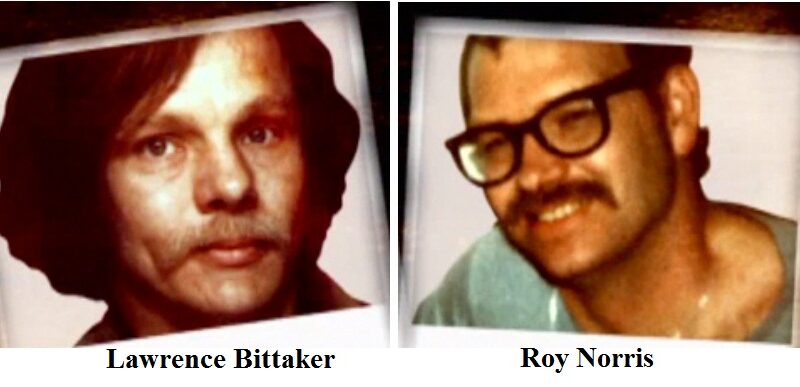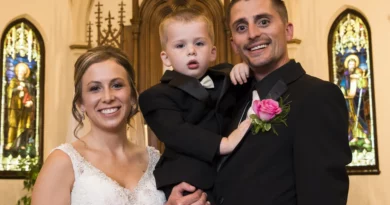The Story of the Toolbox Killers in Southern California
In 1979, Southern California was shaken by a series of brutal murders committed by Lawrence Bittaker and Roy Norris, later dubbed the Toolbox Killers for their use of tools in their sadistic crimes. The two men, who shared a perverse fascination with torture and murder, formed one of the most notorious serial killer duos in U.S. history.
Lawrence Bittaker, born in 1940, had a troubled past that included a series of petty crimes and stints in juvenile detention and prison. Despite an above-average intelligence, Bittaker’s life was marked by escalating criminal behavior, including theft, assault, and fraud. By the time he met Norris, Bittaker was serving time at the California Men’s Colony in San Luis Obispo for attempted murder.
Roy Norris, born in 1948, came from a similarly troubled background, marked by neglect and abuse. After a brief stint in the Navy, Norris’s criminal history began with sexual assaults, which led to multiple prison sentences. It was during one of these sentences that he crossed paths with Bittaker, forming a friendship rooted in their shared violent fantasies.
The pair discovered a mutual interest in torturing and killing young women. They devised a plan to abduct teenage girls and set a goal: to murder at least one girl for each year of Bittaker’s life, which meant 16 victims. Upon their release in 1978, they put this horrifying plan into action.
The Van: The Perfect Killing Machine
After reuniting in Southern California, Bittaker and Norris purchased a silver 1977 GMC cargo van, which they named Murder Mac. The van was customized to fulfill their gruesome purposes, with no rear windows, reinforced flooring, and a bed to conceal their victims. They equipped the van with tools, including pliers, ice picks, sledgehammers, and other items that later earned them the moniker “Toolbox Killers.”
With the van ready, Bittaker and Norris began cruising the streets of Los Angeles, searching for vulnerable victims. They often drove through beach towns and residential neighborhoods, posing as construction workers or friendly men offering rides to hitchhikers.
Their tactic was simple: lure girls into the van, overpower them, and drive them to secluded areas in the San Gabriel Mountains. There, they would torture their victims using the tools from the van before killing them.
The Murders: A Campaign of Sadism
The killing spree began in June 1979 and lasted until November of the same year. During this period, Bittaker and Norris abducted, tortured, and murdered five teenage girls, each more brutal than the last. Here’s a look at their known victims:
Lucinda Lynn Schaefer
On June 24, 1979, Bittaker and Norris spotted 16-year-old Lucinda Lynn Schaefer as she was walking home from a church event in Redondo Beach. They offered her a ride, and when she refused, they forcefully dragged her into the van. Schaefer was the pair’s first victim, subjected to hours of torture and sexual assault before being strangled to death. Bittaker and Norris later disposed of her body by throwing it into a canyon, marking the start of their killing spree.
Andrea Joy Hall
Their second victim, Andrea Joy Hall, was abducted on July 8, 1979, after accepting a ride while hitchhiking along the Pacific Coast Highway. Hall was driven to a secluded area, where Bittaker and Norris took turns assaulting her. Bittaker even photographed her as she begged for her life. The killers eventually killed her by forcing an ice pick into her ear, a tactic that would become a signature of their cruelty.
Jacqueline Leah Gilliam and Jacqueline Doris Lamp
In September 1979, the duo abducted two teenage girls, Jacqueline Leah Gilliam (15) and Jacqueline Doris Lamp (13), who were waiting at a bus stop in Torrance. The killers held the girls captive for nearly two days, subjecting them to horrifying acts of torture that included sexual assault, mutilation with pliers, and beatings with sledgehammers. Bittaker and Norris also recorded their victims’ screams and pleas for mercy on cassette tapes, a detail that would become key evidence in their later trials. After killing the girls, the murderers disposed of their bodies in the San Gabriel Mountains.
Shirley Lynette Ledford
On Halloween night, October 31, 1979, Bittaker and Norris picked up 16-year-old Shirley Lynette Ledford, who was hitchhiking home from a party in Sunland-Tujunga. What followed was one of the most horrific and well-documented killings in U.S. history. The killers recorded the torture, using pliers to mutilate Ledford while she screamed in pain. The recording, later played in court, became one of the most disturbing pieces of evidence in any criminal trial, illustrating the true depravity of the Toolbox Killers. Ledford was killed by being strangled with a wire coat hanger before her body was discarded on a random suburban lawn in Hermosa Beach.
The Arrest: Norris’s Betrayal
In November 1979, Norris bragged to a friend about the murders, describing the details in shocking detail. The friend, horrified, reported Norris to the police. Norris was arrested soon after and quickly confessed to the crimes, implicating Bittaker as the ringleader in exchange for a plea deal. He provided detailed accounts of the abductions, torture, and killings, as well as the locations of the bodies.
Norris’s confession led to Bittaker’s arrest. When police searched Bittaker’s hotel room and van, they found tools, photographs of victims, and the cassette tape of Shirley Ledford’s torture. The gruesome evidence corroborated Norris’s accounts and confirmed the scale of the crimes committed by the duo.
The Trial: Confronting Evil
Lawrence Bittaker’s trial began in January 1981, and it quickly became one of the most disturbing cases in California’s criminal history. Prosecutors played the tape of Ledford’s torture for the jury, bringing many to tears. Jurors later described the experience as traumatizing, with some admitting they could never forget the chilling screams on the tape. The tape was used to demonstrate the sadistic nature of the crimes and Bittaker’s lack of remorse.
Bittaker was convicted of all charges, including five counts of first-degree murder, multiple counts of kidnapping, rape, and torture. In March 1981, he was sentenced to death. Bittaker showed little emotion throughout the trial and remained unrepentant even after his sentencing, often referring to the crimes with chilling detachment.
Roy Norris, who had cooperated with law enforcement, was convicted on similar charges but received a lesser sentence of 45 years to life as part of his plea deal. Norris testified against Bittaker, describing their crimes in graphic detail. Despite his cooperation, Norris was denied parole multiple times, as his role in the crimes was deemed too heinous for early release.
The Legacy of the Toolbox Killers
The crimes of Lawrence Bittaker and Roy Norris left an indelible mark on Southern California. The brutality of their acts, coupled with their methodical approach and use of tools for torture, earned them a reputation as two of the most sadistic serial killers in American history.
The case led to discussions about parole, recidivism, and how to prevent violent criminals from re-entering society. Both Bittaker and Norris had extensive criminal records before meeting each other, raising questions about the effectiveness of the prison system in rehabilitating offenders with violent tendencies.
Bittaker remained on death row at San Quentin State Prison until his death in 2019, still awaiting execution. He maintained a manipulative demeanor, often using legal filings to draw attention to himself and make life difficult for the legal system. Norris, meanwhile, died in prison in 2020 of natural causes, never having been granted parole.
The Psychological Impact of the Toolbox Killers’ Crimes
The crimes committed by Bittaker and Norris continue to impact the families of the victims, the investigators who worked on the case, and even the jurors who listened to the evidence. The tape of Shirley Ledford’s torture has been described as one of the most traumatic pieces of evidence in American criminal history, leading to lasting psychological scars for those who heard it.
For Southern California, the murders marked a period of fear and paranoia, especially among young women who became wary of hitchhiking or accepting rides from strangers. The case also contributed to changing attitudes toward serial killers, highlighting the importance of tracking and managing repeat offenders.
The Enduring Infamy of the Toolbox Killers
Despite their deaths, the legacy of the Toolbox Killers lives on in true crime literature, documentaries, and discussions of the darkest corners of human behavior. Their crimes are often cited as some of the most heinous in the annals of American criminal history, a chilling reminder of the evil that can lurk behind seemingly ordinary individuals.
The story of Lawrence Bittaker and Roy Norris is not just one of brutal violence but also of the human capacity for sadism and the complex factors that lead to such extreme behavior. The Toolbox Killers remain a morbid fascination for true crime enthusiasts, a cautionary tale about the dangers of unchecked violence, and a symbol of the worst kinds of depravity.
Discover more from City Towner
Subscribe to get the latest posts sent to your email.




